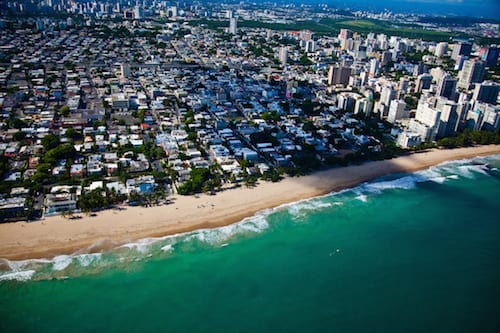
Puerto Rico's Toxic Landfills: Why Congress Must Act
David Williams
March 31, 2016
Puerto Rico’s official tourism slogan is “Puerto Rico does it better!” But, with several House and Senate hearings recently on Puerto Rico’s fiscal crisis, which has spotlighted the Island’s disastrous economic and fiscal management, that slogan should be updated. Puerto Rico’s books aren’t the only example of poor governance. There is also the environmental disaster building up in its toxic landfills. This is personally troubling considering the 3 ½ years I lived on the Island.
The media in Puerto Rico reports that 22 of the Island’s 27 municipal landfills are in violation of federal safety standards, and a cursory review of media reports shows that these landfills appear to have an unbroken record of violating safety rules since they were applied to Puerto Rico in 1994. The small number of landfills that have been consistently in compliance with federal rules are all privately owned and managed. Conversely, the long list of toxic landfills that have never managed to be in compliance are all owned by the Commonwealth of Puerto Rico, managed by municipalities with a green light from the Environmental Protection Agency (EPA) and funded by taxpayers.
As background, when Subtitle D of the Resources Conservation and Recovery Act (RCRA) was applied to Puerto Rico in 1994, the Puerto Rico Environmental Quality Board (EQB) promised to close a majority of the landfills. Over the last 22 years, only three landfills have been shut down.
Earlier this month, the EPA did their usual routine of issuing closure orders, this time on three landfills, saying they were a threat to public health, and criticized the Island’s local authority, the EQB for not doing its job. Curiously, two of the three landfills ordered closed – Vega Baja and Juncos – had been issued EPA closure orders in 2014, as well. Yet, they are still operating today. To see them continue to operate, and continue to break the rules and threaten local communities, is to know the depth of mismanagement and poor governance in Puerto Rico. It is also a testament to the ineptitude of the EPA.
Let’s consider the dangers here. The toxic landfills produce decomposing trash mixing with rainwater, called leachate, which runs out into the groundwater and soil. They also emit toxic methane, and several of the landfills randomly catch fire for lack of security measures. One of the landfills ordered closed this month- for the second time in two years – caught fire only days earlier. Also, large refuse items dumped at the non-compliant sites like tires and refrigerators, collect rainwater and provide a breeding ground for disease-bearing mosquitoes at a time when Puerto Rico faces a Zika outbreak.
The history of the landfill crisis there shows an alarming lack of attention not only by the Puerto Rico Government, but at the EPA as well. EPA spends enormous effort (and taxpayer money) trying to interfere with job-creating industries, but has allowed Puerto Rico to maintain a system of landfills where nearly all of them have never been in compliance with federal standards and have posed serious public health threats to the local communities around them.
As Congress moves to address Puerto Rico’s fiscal problems through legislation by Rep. Rob Bishop (R-Utah), Chairman of the House Natural Resources Committee, it would be fitting for the Committee to demand answers and accountability from Puerto Rico’s Government, and from the EPA, for the failure to close these toxic landfills. No amount of money or kicking the can down the road will make the local communities safer if there is no accountability. Before it closes another business down in the U.S. through job-killing overregulation, the EPA should start closing down the toxic landfills in Puerto Rico. This is the Flint, Michigan of Puerto Rico, and it’s time Washington did something about it before taxpayers are left holding the bag.
